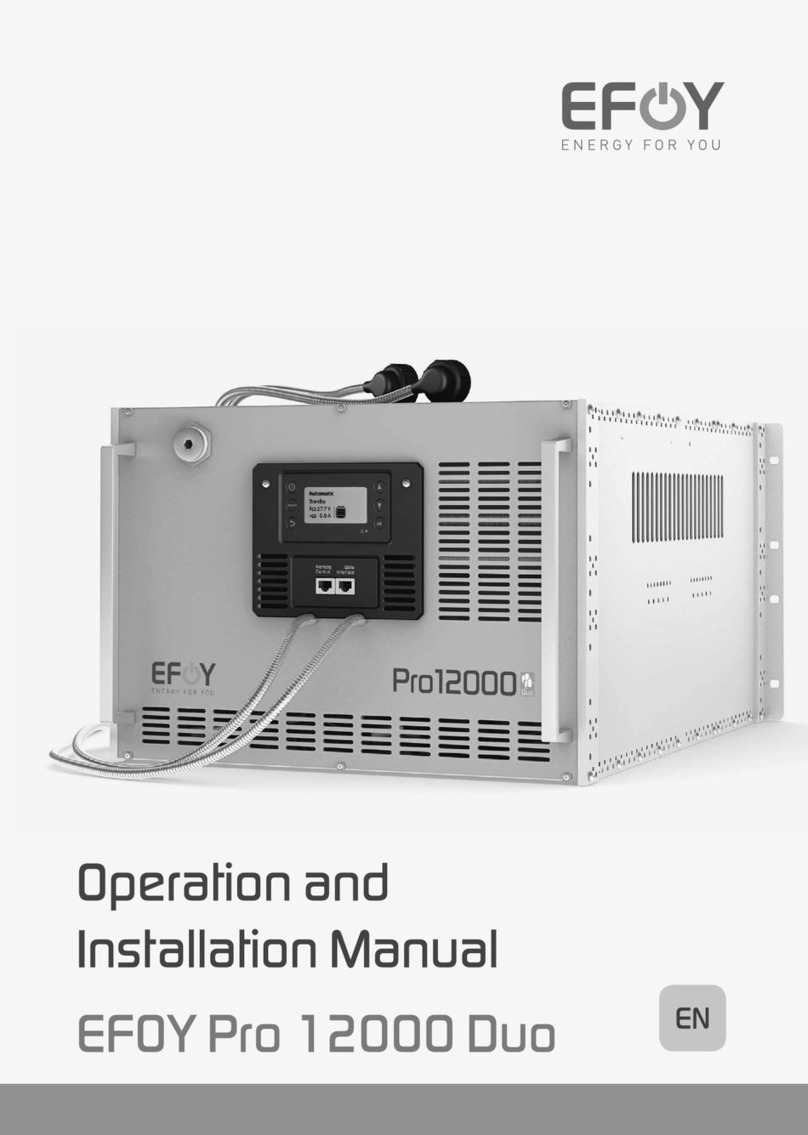General Instructions
Do not open unit or fuel cartridges. Do not use force to
open cartridges and do not refill them. Any modifications
to the unit may affect safe operation, will lead to a loss of
license and will void the guarantee. Use only original
EFOY equipment.
Do not store unit and fuel cartridges at temperatures
above 45° C. Do not operate at temperatures above 40°
C. Keep away from heat and direct sunlight.
Store the unit where there is no danger of freezing, or
use the automatic antifreeze feature.
Do not smoke when handling the unit or the fuel
cartridges.
Keep away from heat and open flame.
There is a danger of fire if methanol leaks out following
an accident, or if the unit or the fuel cartridge has been
damaged. Keep away from open fire and make sure area
is well ventilated. Small amounts of methanol which may
leak out will evaporate without leaving any residue.
Keep unit and fuel cartridges (including empty or
partially filled cartridges) out of children’s reach.
Operate the unit only in accordance with instructions and
keep operating area well ventilated. Do not block
exhaust. Avoid inhaling exhaust fumes directly or for
prolonged periods of time.























